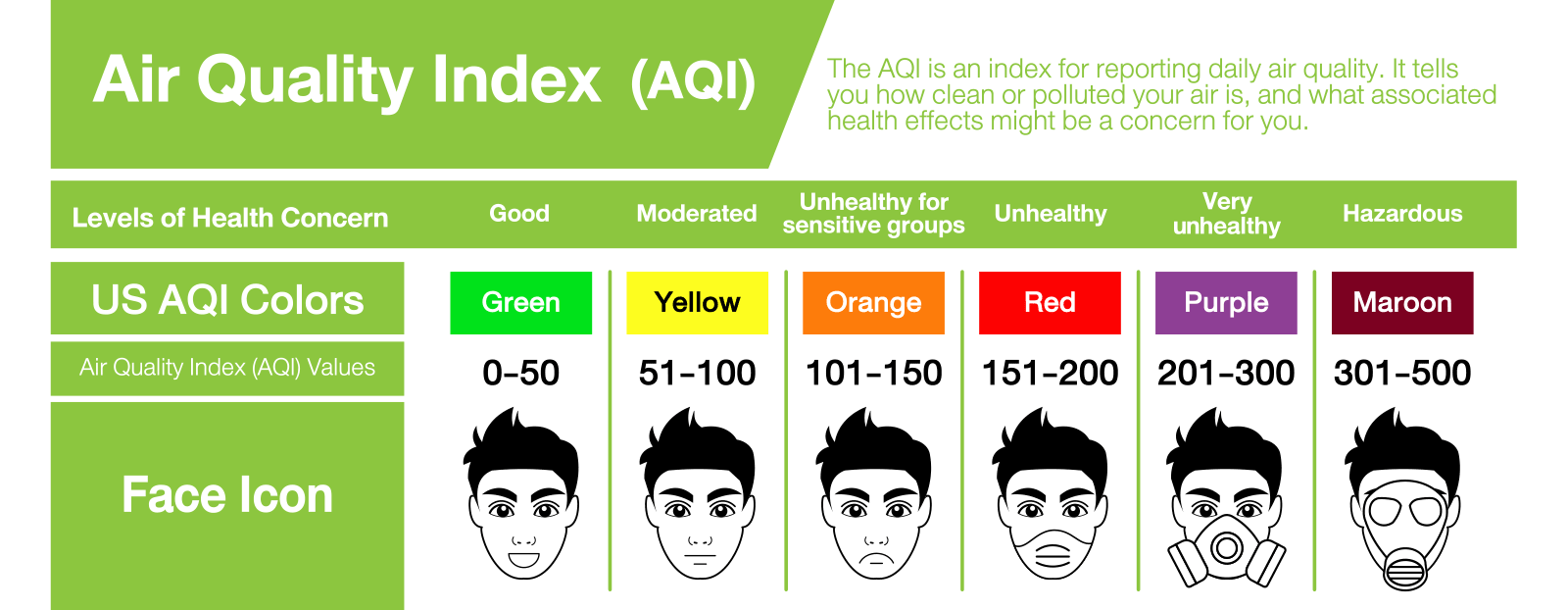
Understanding the Air Quality Index (AQI)
What is it and how does it work?
With its intuitive color scheme to facilitate easy recognition of different risk levels and health recommendations, the Air Quality Index (AQI) is an established method for reporting daily air quality in different regions across the globe. Governments use the index to communicate to the public both current and projected short-term air quality levels.
The index is calculated by assessing pollutant concentrations over a specified period, using either an air monitor or model. Because pollutants vary in potency, the means used to convert air pollution into the AQI varies according to the pollutant. But one aspect remains constant: as the AQI rises, so do the risks to human health.
Consistent and transparent values
Although governments may vary in their individual approaches, AQI values are generally grouped into ranges on a scale of 1-10+. Each range is given its own color, a brief description and standard health advice from the relevant government. For example, the range 1-3 may denote a low risk to health and comes with the recommendation: “Enjoy your usual outdoor activities.” Higher up the index, the range 7-10 might be classed as “high” and be accompanied by recommendations to avoid strenuous activities and instruct children and the elderly to take it easy.

Comprehensive pollutant spectrum
What makes the AQI so useful is that it takes into account a broad spectrum of pollutants, from ground-level ozone, particulate matter and carbon monoxide to sulfur and nitrogen dioxides. Because each pollutant has its own air quality guidelines, it is easy for governments to provide clear and meaningful guidance. The AQI can provide virtually real-time pollution levels. For example, to indicate increased risk during rush hour periods. It can also show spikes if there is a forest fire upwind of a heavily populated area or where pollution concentrations intensify when there is little wind. Since making its debut in 1968, the AQI has proven itself a highly reliable and useful tool for alerting people to public health risks associated with air pollution.
 automotive filtration insight
automotive filtration insight